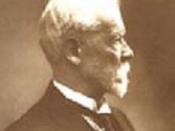In the twentieth century a brilliant French mine owner by the name of Henri Fayol first developed the concept "Four Functions of Management" to help the functionality of an organization and its functional design. This concept focused on essential skill development. Since then, the "Four Functions of Management" have been utilized by teams and by emerging corporations in marketing. One would assume that this concept has been finely tuned, but to this day it is still the center of much management thinking.
Planning
Planning consists of goal setting; developing plans to achieve goals, and creating the implementation plans to achieve them in a timely manner and of the highest quality possible.
The "Four Functions of Management" which consist of Planning, organizing, leading, and controlling, are all directly utilized and applied in my current position as the Administrative Intelligence Specialist for the United States Army. My intelligence team is responsible for the gathering and processing of intelligence to include personnel administration support to soldiers.
Planning is essential for my administrative team and me. Our missions and unit goals are planned a year in advance. Certain administrative suspense's and personal goals are set for specific teams and evaluated threw quarterly counseling's. Our yearly plan is evaluated on a quarterly basis to ensure that specific goals and missions are being met. This planning strategy also aids in manipulating our plans if the need arises.
My current platoon leader uses and old saying "plan your work then work your plan". As simple as it sounds, this saying is something I try to live by and also impress upon my subordinate soldiers.
Organizing
The function organization consists of converting the planned steps into reality. At this stage it is necessary to assign tasks, to set deadlines, allocate resources, and to decide what structures of...


The Four Functions of Management
This essay matched my assignment perfectly!
1 out of 1 people found this comment useful.